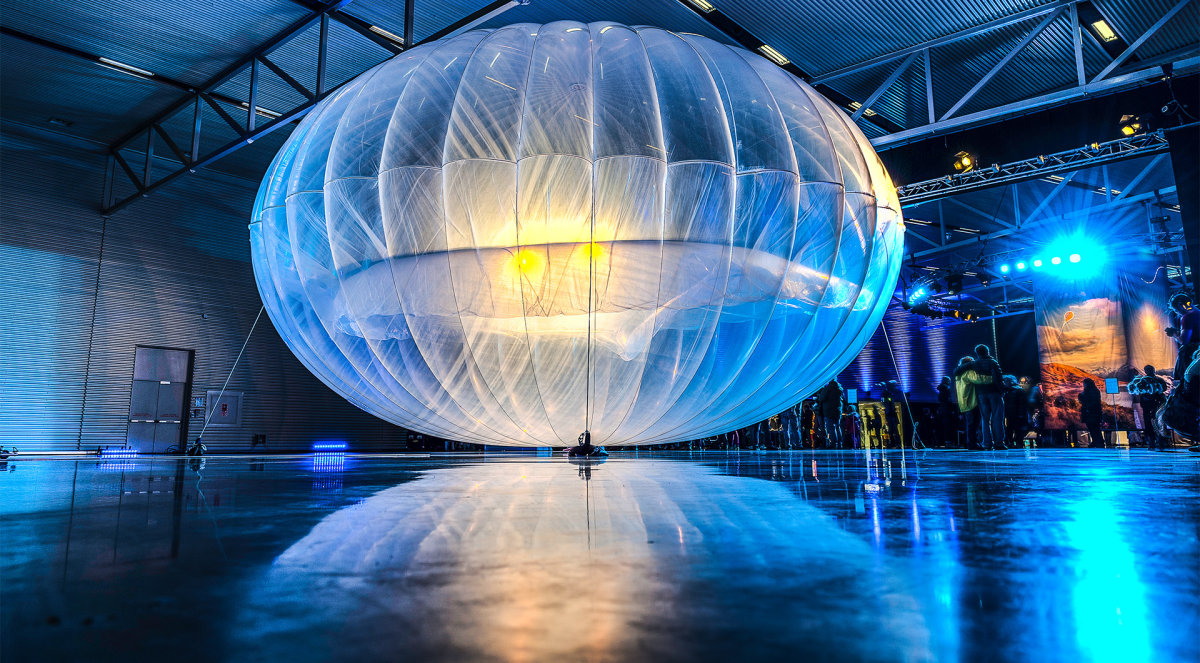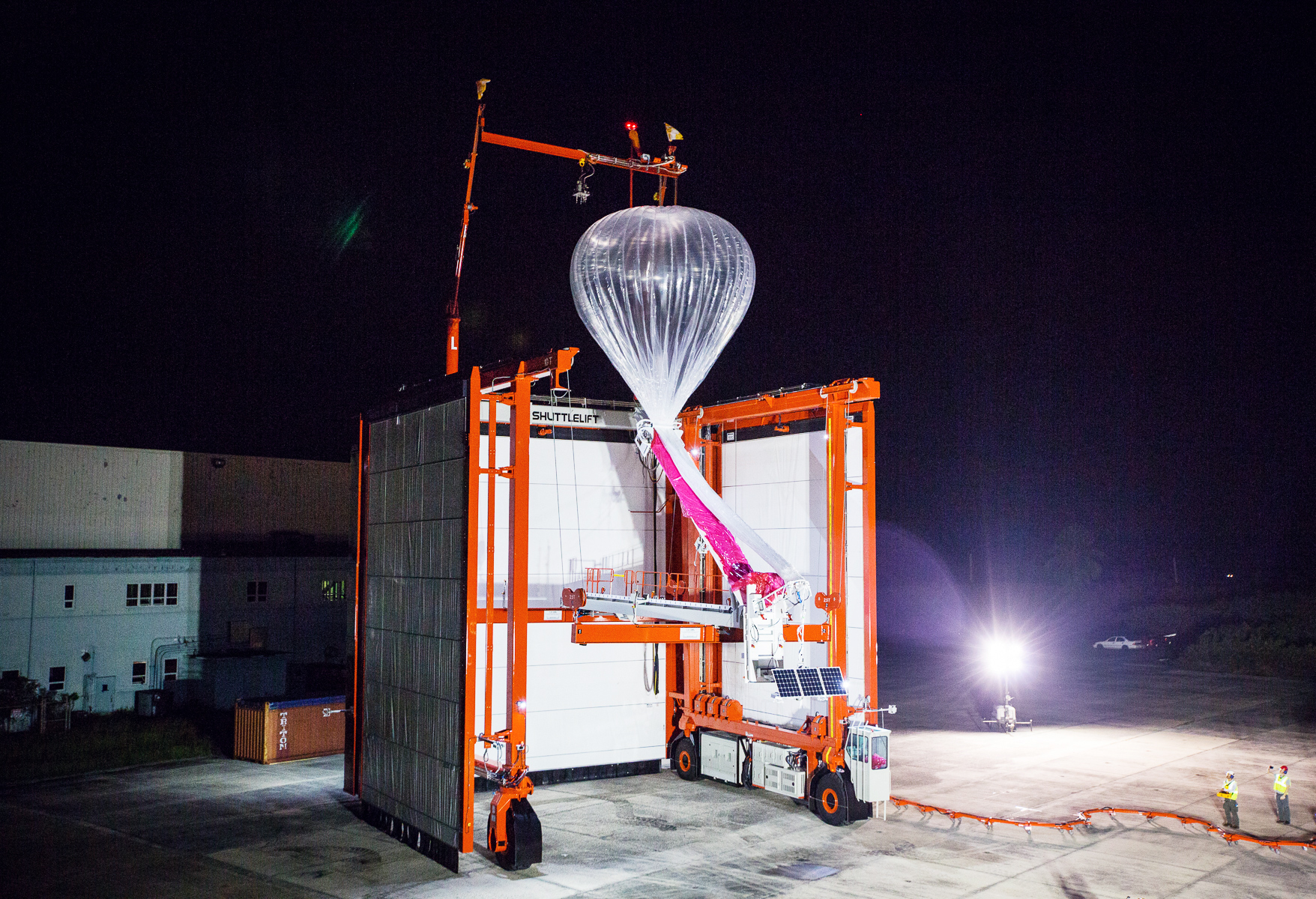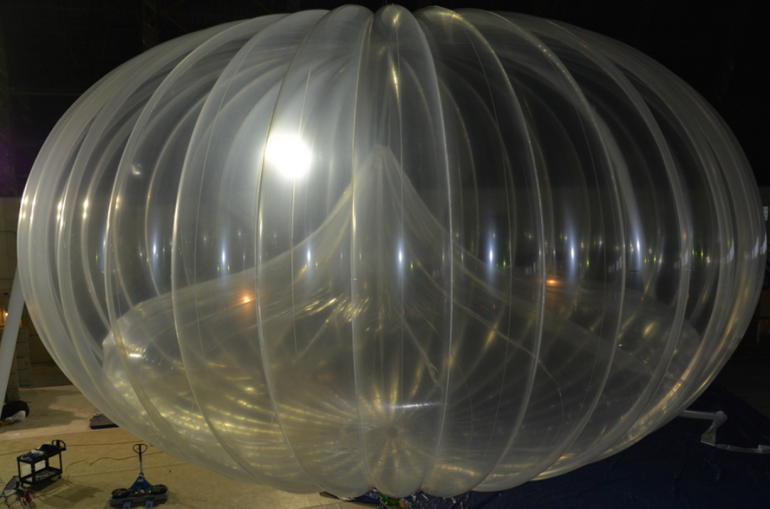AI helps keep Google Project Loon balloons in place for weeks

Google Project Loon is a project of Google Corporation for the provision of communications for residents of remote remote regions of our planet. In such places it is difficult to conduct a fast channel of Internet connection. Sometimes the problem is in the inconvenient geographical location of the region, sometimes in the fact that it is simply unprofitable for the ISP to pull a “wide” communication channel to an area inhabited by several dozen people.
A few years ago, Google was committed to addressing this issue. Engineers of the company proposed to create a network of powerful access points suspended on stratospheric balloons. In the stratosphere, such a balloon can hang for weeks or even months, distributing the Internet over a wide area.
The project is moving forward. Last year, Google entered into an agreement with providers such as Indosat, Telkomsel and XL Axiata. After the balloon network infrastructure is fully deployed, these companies will give a signal to access points on aerostats, and those will broadcast the signal to regions where the Internet has either not existed before, or it was very slow.
To control the balloon company patented its own technology . True, here we are talking about managing the height of the balls. But the actual and horizontal displacement of balloons under the action of the movement of air layers. What to do in this case? Leaving the access point from a specific point is fraught with loss of communication.

Google engineers have solved this problem. The company succeededhold the balloon over one of the regions of Peru for about 100 days. The object was located approximately in the same place during all this time, without being displaced by a critical distance neither horizontally nor vertically.
Balloon launched from Puerto Rico. After 12 days, he reached the territory of Peru. On the day, the navigation system made dozens of corrective maneuvers so that the ball moves in the right direction. If there were no suitable air flows over land, the ball shifted towards the Pacific Ocean, where the desired air flow was located. During the 14 weeks of stay over the territory of the pen, the tested balloon performed more than 20 thousand route adjustments. After that, the ball planted without any problems.
The corporation used a weak form of artificial intelligence to control its flying access point. Initially, the balloons were kept in the same place, using specially developed algorithms that took into account many factors at the same time. These are altitude, object coordinates, wind speed, time of day, season of the year and much more. The problem is that when launching a stratospheric balloon, no one really knows how this will end: too many factors affect a gas cylinder, some of which are unpredictable. That is, the algorithm can not be taught to immediately solve the problems with the displacement of balloons perfectly. Therefore, it was decided to use AI. “Instead of spending time supporting the position of balloons in one place, we spend more time on our users.”
By controlling the balloon, the computer system is gradually learning. Having found the optimal solution in one of the cases, she will use this solution in the other case if the conditions are repeated or close. “These algorithms cope with holding balloons in one place much better than any person could have done,” said Sal Candido, who was previously responsible for one of the development directions of Project Loon.
Machines do their job well, but not perfectly. The problem is that often there are new conditions, factors that critically affect the movement of the ball. In this case, the calculations have to be carried out again, with the simultaneous adjustment of the course of the balloon. Candido defended his scientific work on stochastic optimal control. And he brought his experience to Google Project Loon. Here he decided to use the principleoptimal control of stochastic systems in order to keep the network of balloons in one place.
Google does not use the weak form of AI in its projects for the first time. The most well-known case of a corporation working with AI is the creation of a system for playing go. AlphaGo, the Google DeepMind division, easily defeated one of the world's strongest players, Go Go Sedol. A few months later, the corporation managed to reduce power consumption in its data centers by 40% thanks to another AI service, also developed by DeepMind.
Speech about the use of neural networks in Project Loon is not. Instead, the project engineers applied the basics of the Gaussian process.. In order to train the aerostat control algorithm, engineers downloaded the data from previous “flights” into the system. Total project balloons flew about 17 million kilometers. Using the Gaussian process, the navigation system can determine the optimal course of the ball, indicate when the balloon is better to go up and when to go down. Employees of the corporation have developed models to predict the movement of air masses at different altitudes.

Computer system forecasts are still not perfect. In some cases, she is mistaken. And not because it works badly, but because the weather conditions in the stratosphere are a little predictable thing. In order to reduce the percentage of errors, experts used stimulated computer system training. And even after forecasting the trajectory of the balloon, ground systems and ball detectors continue to monitor weather conditions. If something changes, a preliminary prediction of the trajectory can be changed in accordance with the new data. All work is done in real time.
Candido says that the use of AI to adjust the movement of balloons and control the entire network of air access points has become possible only thanks to the company's resources. All calculations are performed in its powerful data centers. And the data that needs to be processed is very, very much. According to the participants of the Project Loon project, so far the work of computer systems is far from perfect. But even then, machine learning is working, and computers are running better and better with balloons over time.

Improved and service systems. For example, to launch balls from 2015, use the " Autorunner". This is a special platform by which a team of four people can launch a balloon once every 15 minutes. Before the platform was created, every single launch was an entire event. To successfully send a ball to the stratosphere, 5-7 people were required to launch one ball in 45 minutes at a wind speed of not more than 9 kilometers per hour (now the wind speed may exceed this value, reaching 24 km / h).
